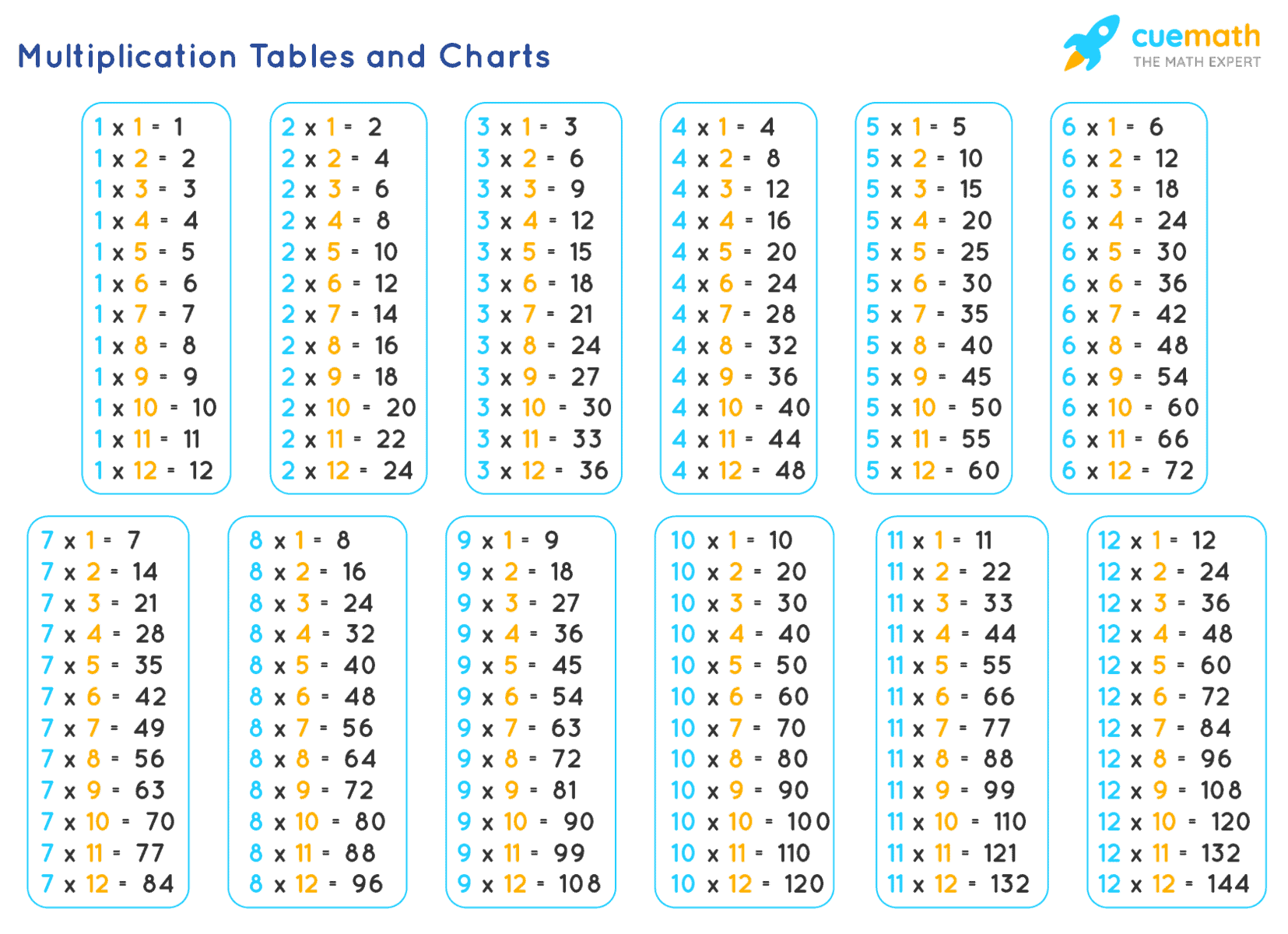Mastering the Multiplication Times Table Chart: A Parent’s Handy Guide
Welcome, super moms and dads! Are you ready to turn those multiplication blues into a bunch of high-fives? You’re in the perfect spot! We know that helping your little learner navigate the world of numbers can be a bit like scaling Mount Everest in flip-flops—daunting, to say the least. But fret not, because we’ve got the ultimate tool in our math toolbox: the multiplication times table chart!
Why a Multiplication Chart is Your New Best Friend
Think of the multiplication chart as your trusty sidekick in the quest to conquer math mountain. It’s colorful, it’s organized, and boy, does it make a world of difference! Here’s why:
- Visual Learning: Some kids are visual learners, and having a chart can transform abstract numbers into a clear, visual format that’s much easier to understand.
- Memory Boost: Repetition is key when it comes to memorization, and a chart provides a constant reminder that helps facts stick like gum on a shoe.
- Confidence Building: As your child becomes more familiar with the chart, you’ll see their confidence skyrocket faster than a rocket to the moon.
The Basics of a Multiplication Chart
Let’s take a moment to demystify this chart, shall we? A typical multiplication chart is a grid, usually 10×10 or 12×12, filled with the products of the numbers from 1 up to 10 or 12 across the top and down the side. These charts serve as a roadmap for quickly finding the result of two numbers multiplied together.
Introducing the Chart to Your Child
Dive into the multiplication adventure by making a big reveal of the chart. Hang it in a place where it’ll be seen often, because out of sight means out of mind! Here’s how you can introduce the multiplication times table chart to your kiddo:
- Start by explaining the layout of the chart and how to read it.
- Point out patterns, like the repeated numbers down the diagonal (that’s the squares, numbers multiplied by themselves—cool, right?).
- Challenge your child to find the product of two numbers using the chart.
Remember, positivity is contagious! Celebrate their victories with encouragement and maybe a little happy dance, because why not?
Fun Ways to Practice with the Multiplication Chart
Practice makes perfect, but it doesn’t have to be a snore-fest. Sprinkle some fun into learning with these engaging ideas:
- Color-Coding: Have your child color-code the chart. For instance, they can use different colors for even and odd numbers, which makes patterns stand out.
- Chart Races: Set a timer and challenge them to find as many products as they can within a certain period.
- Flip It: Cover up parts of the chart and have your child guess the hidden numbers.
It’s all about making learning a playground, not a battleground.
Staying patient and keeping the experience light and playful is the golden ticket to a journey filled with learning and laughter. A multiplication times table chart might seem like a simple tool, but it’s your ace in helping your child develop numerical fluency.
In our next section, we’ll delve into creative ways to incorporate the chart into everyday life, memorization tricks that don’t feel like chores, and how to use technology to our advantage. Stay tuned, because the fun in numbers is just getting started!

Five Things Parents Should Know in Preparing for Multiplication Times Table Chart
Before you embark on this numerical adventure with your child, arm yourself with these essential insights. Here’s what every parent should know:
- Foundation Is Key: Ensure your child has a solid grasp of addition before diving into multiplication. Multiplication is essentially repeated addition, so a good understanding of adding numbers is crucial.
- Sensory Involvement: Children learn better when multiple senses are involved. While seeing the chart helps, saying the times tables out loud and writing them down can enhance retention.
- Customize the Experience: Children have different learning styles. Some might prefer songs or rhymes, while others might like games or physical activities. Tailor the learning process to what engages your child the most.
- Consistency Matters: Establish a routine that includes regular practice. Whether it’s daily drills, weekly quizzes, or games, consistent exposure helps embed these facts into memory.
- Patience and Praise: Encourage effort over perfection. Celebrate the process and reward improvements. Your patience and positive reinforcement will boost your child’s motivation and enjoyment of learning.
Now that you’re equipped with this knowledge, let’s make the multiplication chart a staple in your child’s mathematical diet!
Integrating Multiplication into Daily Life
Learning opportunities are all around us! Here are some daily activities where you can sneak in a bit of multiplication fun:
- Cooking Time: Double a recipe together and discuss the multiplication involved in adjusting the ingredients.
- Shopping Spree: Calculate total costs of multiple items to flex those multiplying muscles.
- Nature Walk: Count the legs on insects or petals on flowers and multiply to find totals for sets of these creatures or plants.
Life presents endless scenarios for practical math application, making learning relevant and fun!
Memorization Without the Monotony
Rote learning can be effective, but let’s be real—it can also be as dull as dishwater. To spice up the memorization process, try these tips:
- Times Table Songs: Plenty of tunes make learning snappy and snazzy. Find them online or make up your own jingles!
- Storytime with Numbers: Create stories where the numbers are characters, and their multiplication adventures become the plot!
- Visual Arts: Encourage drawing or crafting projects that incorporate multiplication, like arrays made with stickers or stamps.
These creative methods transform memorization from a chore to a choice activity!
Embracing Technology
In this digital age, technology can be a fantastic ally in education. Here’s how you can use tech to support learning:
- Apps and Games: There’s an app for that! Fun, interactive games make drilling times tables something kids actually look forward to.
- Online Quizzes: Websites offer quizzes that can adapt to your child’s learning level, offering a personalized challenge.
- Video Tutorials: Video platforms provide visual and auditory lessons on multiplication that can be paused and replayed until concepts click.
Who says screen time can’t be productive? With the right resources, your tablet or computer can become an educational powerhouse.
So go ahead, embrace the multiplication times table chart and all the joyous learning it can bring. With imagination, patience, and a bit of strategic planning, you’ll be astounded at how quickly your child becomes a multiplication mastermind!
For more great fun click here. For more information see here
Disclaimer
The articles available via our website provide general information only and we strongly urge readers to exercise caution and conduct their own thorough research and fact-checking. The information presented should not be taken as absolute truth, and, to the maximum extent permitted by law, we will not be held liable for any inaccuracies or errors in the content. It is essential for individuals to independently verify and validate the information before making any decisions or taking any actions based on the articles.




